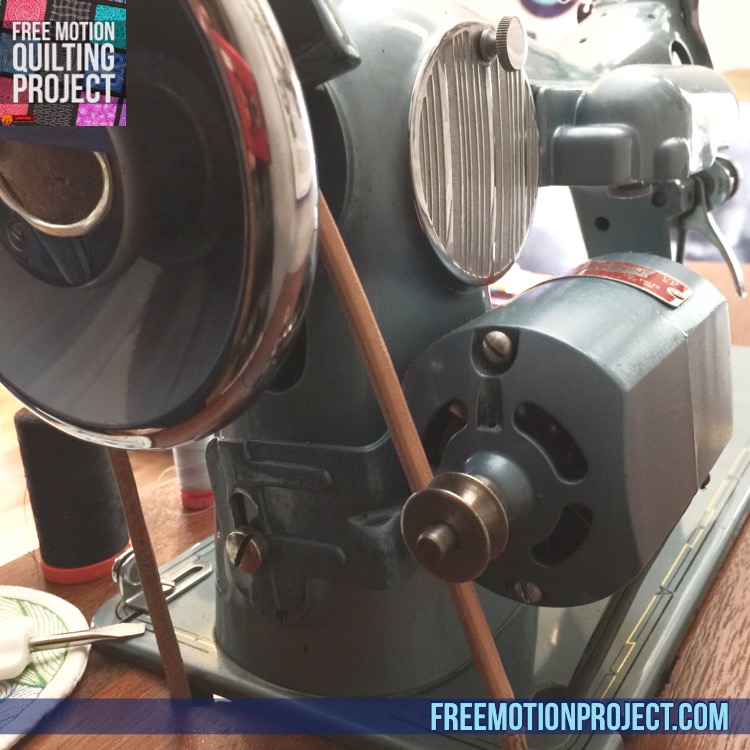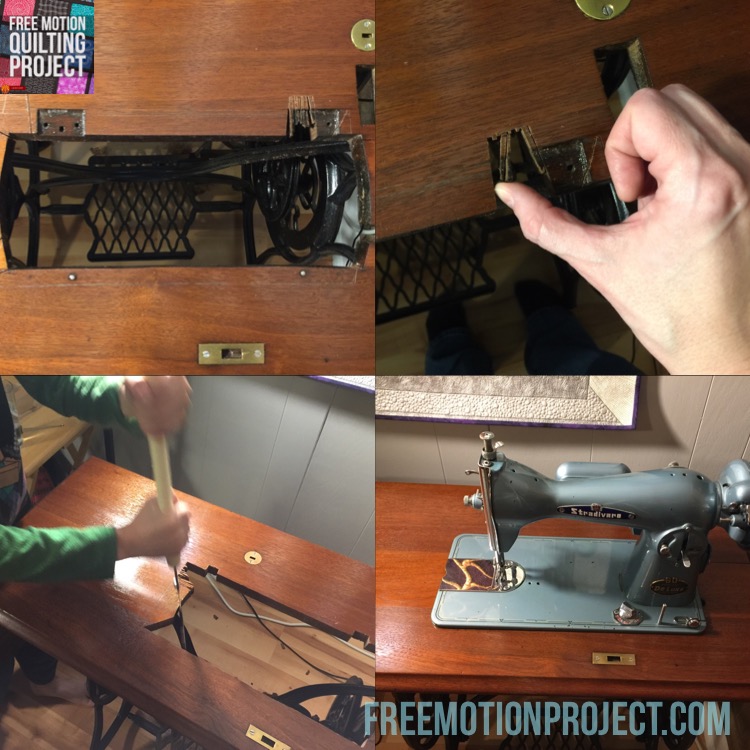Cut a Treadle Cabinet to Fit a Singer 15 Machine
Click here to check out the Japanese saws that I used to cut out my Singer treadle cabinet.
What is a Singer 15 Clone?
I first searched for a Singer 12 in good enough shape for sewing and quilting. When that proved impossible, I began looking for a Singer 15 clone. This is a machine made with the same basic plans as a Singer 15, but by a Japanese manufacturer after World War II.
I like this one because it had been recently serviced, was being sold at a great price, and came in a pretty blue color!

Singer 15 Clones are straight stitch machines that come in a wide variety of colors!
All of these machines, and most early Singer machines measure a standard size which means I can now switch out many different machines in this treadle cabinet.
That means more sewing machines right? This kind of mass compatibility is a dangerous thing! LOL!
How to Know if a Machine can become a Treadle
Obviously not all sewing machines can run off of a treadle belt. I knew a Singer 15 Clone would work after learning what to look for from Cheryl Warren. She mentioned looking for a machine that had a potted motor on the back that could be easily removed.

This motor can be easily removed with a few screws or it can be bypassed as you see in the photo so the machine is running on the treadle belt instead.
This motor attaches to the back of the machine with a few screws. Just by carefully checking the Ebay listing, I was able to see this Singer 15 Clone could be turned into a treadle machine and it was already sewing beautifully!
Making a Template to Cut the Tabletop
The hardest part about cutting the tabletop was the fear of messing it up. At first I was going to cut out the hole by measuring the machine carefully and transferring the marks to the table. But that was a really easy way to make mistakes. Because the machine needed to sit on a lip on the table, I could have easily cut out too much.
Instead I used scrap cardboard to make a template of the base of the machine. I cut the cardboard carefully so that it fit around the machine tightly and left at least a 1/2-inch lip to support the machine. I then drew the line around it to indicate where the machine’s outer edge was.

It took around 3 hours to cut out the hole to fit this new machine. Thanks to the template I created, it was a perfect fit!
Taking this template to the tabletop made everything much easier. I marked the design on the tabletop exactly and only cut out exactly what I needed to remove.
I used two Japanese-style pull saws to cut out the hole in the cabinet. This worked much easier and faster than the American saws I was used to using. While I know I wasn’t super fast in the video above, I sped up quickly as I gained more experience with how the saws worked.
Lessons Learned
I did make a few mistakes and dinged up the tabletop here and there, but overall I consider this a great success. I set the machine in the cabinet, and then set up my treadle belt to get it working. The cool thing about this particular Stratavario machine is that I did not have to remove the motor. I only had to remove the belt and could leave the motor in place. That means I can always put the belt back on and plug in the machine and be able to run it off of a foot pedal instead.
This experience has also taught me a lot about the different treadle bases and has helped me understand the difference between the different parts. My Singer 27 has a much bigger wheel and admittedly is a better treadle base than this Singer 12 base.
The reason is the wheel on the Singer 12 base is much smaller so I only take three stitches for every time the wheel turns. This is only an issue when I want to make lots of stitches in a hurry, so free motion quilting is probably not going to be a good fit for any machine in this cabinet.
I hope you can see how easy it was to modify this treadle base cabinet so it can fit a wider range of machines. Of course I can now collect many more vintage machines to go in this cabinet! That’s kind of dangerous so I’m going to try to be satisfied with just this little Stratavario for now.
Learn more about treadle sewing machines in this podcast episode with Cheryl Warren.
Let’s go quilt,
Leah Day

Hi! Do you have any suggestions where I can purchase (or obtain plans to build) a PORTABLE treadle cabinet to fit a modern Janobi treadle sewing machine? I travel to craft shows and would like to demonstrate how I make my projects but do not want to lug around cast iron! Thank you for any help you can give me.
Nope, I’m sorry, but the two treadles I have are not portable in any way. I know there were some models made of wood, but it was still a big cabinet to deal with. My suggestion would be to look at hand crank machines instead. You might be able to modify your Janobi to work with a hand crank too!
Hello, I’m trying to find the bed dimensions of a Singer 15-88 but am having no luck. I’ve found a nice table but don’t know if the hole is the right size and don’t want to purchase it until I’m sure, and I don’t have the machine here for measuring. Could you please help? Many thanks.
I have a Singer 237 in my treadle base now and the rough dimension of the cut out is 13 1/2 x 6. If the table was a Singer cabinet, it should fit, but what I’ve found is it may need a bit of tweaking here and there as you switch machines.